Villa on Dunbar Rock, Guanaja, HondurasContents of this Issue: Villa on Dunbar Rock, Guanaja, Honduras Shearwater Recalls Its Computer Transmitters Save Money on Baggage. Fees: Pack with a Purpose Another Good Story about that Epic Thai Cave Dive Rescue Random Thoughts on Dive Travel Glitches A Diver Boosts the #MeToo Movement in Egypt Why Are Red Sea Sharks Biting More Often? What’s What at the Latest DEMA Show Big Trouble at Blue Heron Bridge “I Very Quickly Realized It Was a Crocodile” Dumping Lead Down the Toilet Gets a $197,000 Fine Readers Have Their Say about Our Review of Sunset House No Abalone Diving in California Until at Least 2021 Confused about Lithium Batteries? Editorial Office: Ben Davison Publisher and Editor Undercurrent 3020 Bridgeway, Suite 102 Sausalito, CA 94965 a tranquil “round the rock” dive spot in the Caribbean from the January, 2019 issue of Undercurrent
Dear Fellow Diver: The first time I dived the island of Guanaja was November 1998, a week after Hurricane Mitch devastated the Bay Islands. The operation in Roatan I was diving with motored us nine miles over to Guanaja because Roatan's north side was still too rough and my divemaster thought Guanaja's south side would be better. While Roatan was relatively spared, Guanaja had been denuded of anything green by the 180-m.p.h. winds of that Class 5 hurricane four days prior. Bonacca, a town built on stilts around a sandbar in Guanaja Bay, was damaged but still standing. But what I remember most was that the diving I did, at a bare sandbar called Southwest Cay, was great -- some of the best I've done.
Unfortunately, much of the sea around Guanaja has been heavily harvested for decades. If you've ever eaten at a Red Lobster restaurant, your dinner probably came from Guanaja, as their fisheries supplies that restaurant chain. About three years ago, the locals realized that needed to change, and Guanaja now has a marine park encompassing most of the island and still enlarging -- lobster boats now have to go 100 miles off to the east. All divers going to the marine park pay a $10 fee. While I can't compare the health of Guanaja's reefs immediately before the park's institution, I can say that marine life density on its north side is better than at sites on the other Bay Islands. I went to Guanaja with my long-time dive group and the 21 of us rented out the Villa on Dunbar Rock, which can be best described as a four-story, white stucco hotel built atop a big granite rock in the Caribbean. I felt like I was staying on a permanently anchored liveaboard. It's on Guanaja's south side, nearest Bonacca Town, which has less marine life. But it was easy to get to dives on the north side through a canal cut through the middle of the island, a 20-minute boat ride. I wasn't in the best mood when our boat from Guanaja's dirt-strip airport docked at the hotel. Lahnsa Air had lost several bags, including mine, on the flight from Roatan (this seems to be common because Dunbar Rock gives its Mares rental gear for free to anyone whose dive equipment is delayed). But my mood lifted when Jennie, the hospitality manager, escorted us through the high, open-air atrium, always busy with multi-colored hummingbirds flitting between the feeders, and showed me and my dive buddy, Marty, to an oceanfront room on the second floor. The 300-square-foot space was plenty roomy, with a large closet and bathroom, two full-size beds and great sunset views from the balcony, even better when I watched them from the hammock. The solar-heated hot water was unlimited and the air-conditioning was frosty. It's 43 steps from the lobby down to the dock and the PADI dive center; there's also a ramp winding around the building for those who don't do stairs. Dunbar Rock boasts about its "concierge" divemasters, and Raynel, Romel and Manuel, all from Bonacca Town and averaging age 30, certainly were that as they attended to my group. They watched with eagle eyes as I set up my gear at the start of the week, then took turns setting it up the way I liked it on every dive. I never had to lift, haul or repack gear; the trio stored it overnight in a secure area, carried it to the boats, changed tanks and bottles between dives, and rinsed per my instructions. I enjoyed my chats with the friendly chaps -- Raynel has a forestry degree and is active in Guanaja's conservation efforts. Romel, a licensed electrician, lived in the U.S. . . and has no desire to return.
The guys gave detailed briefings, suggested directions to follow and recommended total dive times of 40-50 minutes, but most of the group exceeded an hour, with no complaints. I could make either a rear platform entry or backroll off either side. I chose the latter for a dive at Pinnacles, following Raynel and Romel to 110 feet (the third divemaster always stayed on the boat) and made a quick spiral descent along the vertical sides covered with black coral and hundreds of bluebell tunicates. On the ascending spiral back to the upper reef at 35 feet, I admired the spectacular, sunlit, shallow shelf of healthy coral covered with a rainbow of darting and hovering wrasse, tangs, chubs, black durgeon, multiple types of damselfish and the ubiquitous seargent majors. Visibility averaged 100 feet, better off the walls and less in shallow waters near cays. I climbed the long, sturdy aluminum ladder, and a divemaster was always there to take my rig and carry it to my parking spot. Most rides to dive sites were 30 minutes or less, but I could also dive "round the rock." I just walked down the 43 steps to the hotel's small sandy beach on the bay of Guanaja, 10 to 15 feet deep, with clear water and no surge. It was a Caribbean macro wonderland, with common and reef octopuses, juveniles of everything, invertebrates and sea slugs of all types. A shore dive in the shallows around the hotel introduced me to a nudibranch metropolis, with frequent sea hares and black spotted nudibranchs. I typically began the day by watching the sunrise from the hotel porch after making an espresso from their machine and grabbing a fresh-baked pastry (they were available all day long). I was on the boat by 8 am; divers were warned they'd be left behind if they weren't there by 8:30 a.m., but Manuel ran up to an absent diver's room one morning to make sure he was indeed sitting this one out.
The divemasters handed out drinking water, fresh fruit and tasty tropical drinks after every dive, and it was great to have a long freshwater shower in the sparkling head. We headed back to a full buffet lunch and an hour of down time before getting back in the boat to dive on Guanaja's north side. Chef Arnold, a local, is a self-trained chef who has mastered all sorts of cuisine, producing meals of great quality -- and quantity. Fresh juice, fruit, eggs and bacon or sausage were always on the breakfast menu, and other hot dishes included Central-American-style huevos rancheros with refried beans, pancakes, crepes, and eggs Benedict done to perfection. Lunches were typically hamburgers, sandwiches and chili dogs, with a particularly delicious fried-chicken picnic waiting for us after a morning dive. For dinner, Chef Arnold started us off with of ceviche or homemade minestrone soup, followed by filet mignon, local lobster or garlic shrimp, and finished with caramel flan or key lime pie. If there wasn't a night dive, I ended my days watching great sunsets drop over the distant mountains on mainland Honduras while sitting by the swim-up bar at the infinity pool, adjacent to the main bar and dining room on the third floor. Lisa, the wonderful bartender, served wine to me and my all- American dive group, and I tipped her well for paying attention to our rambling dive stories with a cheerful smile. For a surface interval, I visited Bonacca Town, described as the "Venice of the Caribbean," because most buildings are built on stilts (to avoid tides and sand fleas), and some are three stories tall. Its byways are footpaths and canals -- no streets, cars or scooters, and just a few bicycles. Residents speak English as their household language, due to the early settlers, and are required to learn Spanish in school. I could purchase all my needed sundries in town, and if I wanted, I had plenty of options for fly, bone and deepwater fishing charters. Schools of fish were plentiful, always seeming to greet me as I descended on a dive. At Paradise, it was blue and yellow tang, Bermuda chub, saucer-eye porgy, barracuda and two large wahoos doing a fly-by. The large sandy flat, 50 feet deep, was surrounded by a rim of shallower reef, reminding me of a large athletic field surrounded by bleachers. Players on the field included sand dwellers like sting rays, garden eels, blue-striped lizardfish, yellow-head jawfish, and short-fin pipefish.
Guanaja has 50 named sites (Dunbar has six "secret" ones, visited by special request) that are mostly inside or at the edges of the barrier reef running along its northern and eastern sides. Some are officially drift dives, but I never encountered a current. So the 84-degree November water was as still as glass at Michael's Rock, a series of cracks and grooves in volcanic rock on Guanaja's northern end. Manuel pointed out multiple crevices and swim-thrus at 70 feet for me to poke through and see lobsters, black grouper, porgy, barracuda, porkfish and various species of grunt, followed by the grand finale: more than 100 flamingo tongues clustered together in a 50-foot-patch. On our last night, several of us took the divemasters to dinner at Guanaja's "best" restaurant, Mi Casa Too, also a bed and breakfast. I was reminded the island has no roads when we took a boat from Dunbar Rock and had to clamber over driftwood on the beach and climb 50 steps up the side of a mountain. We were greeted like family in the restaurant, with big-screen TV and bar, and my wood-fired, breaded lionfish with cheese and spices was delicious. Raynel and Romel described what it's like to work in the commercial lobster diving industry (which they do as a side job) with its very high rate of decompression sickness. When I went to say goodbye the next morning, the guys had cleaned and washed everyone's gear, flushed out BC bladders with freshwater, blew air through them and dried them thoroughly the night before. I had no hesitancy handing over my tip envelope. While there are few pelagics, Guanaja has good Caribbean diving, with the advantage of no large dive operations or cattle-boat diving such as in neighboring Roatan. The reef habitats are on the upswing, thanks to the expanding marine park. And no complaints about Dunbar Rock and its superb and truly friendly staff. I plan to go back -- and I hope to see that camera table the divemasters promised to build. -- D.D. Our Undercover Diver's Bio: " I got my dive certification at the YMCA back in the 1970s, but I didn't do much diving until I loved to Los Angeles in 1990. Then I got recertified and rapidly received certificates for technical diving and rebreathers. I've been doing about 100 openwater dives a year for the last 25 years with a good local dive group, and I've dived all around the world but certainly not everywhere. I presently have more than 1,500 openwater dives under my belt and about 200 technical/ rebreather dives, although I don't do those anymore. I just like to dive."
|

I want to get all the stories! Tell me how I can become an Undercurrent Online Member and get online access to all the articles of Undercurrent as well as thousands of first hand reports on dive operations world-wide
| Home | Online Members Area | My Account |
Login
|
Join
|
| Travel Index |
Dive Resort & Liveaboard Reviews
|
Featured Reports
|
Recent
Issues
|
Back Issues
|
|
Dive Gear
Index
|
Health/Safety Index
|
Environment & Misc.
Index
|
Seasonal Planner
|
Blogs
|
Free Articles
|
Book Picks
|
News
|
|
Special Offers
|
RSS
|
FAQ
|
About Us
|
Contact Us
|
Links
|
3020 Bridgeway, Ste 102, Sausalito, Ca 94965
All rights reserved.

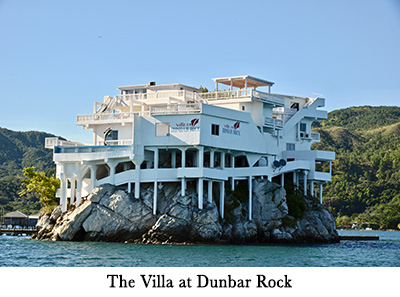 Exactly 20 years later, I stepped off one of Dunbar
Rock's boats to revisit Southwest Cay, covered with greenery
once more. I looked down at Afternoon Delight's multiple
beds of colorful healthy hard corals and fields of purple
sea fans at 40 feet. Eagle rays and three-feet-across
Southern sting rays flew by, while barracudas eyed me
from a distance. Schools of just about every species of
Caribbean reef
fish -- queen
and French angelfish,
surgeonfish
and Bermuda chub
-- were moving
everywhere. A
hawksbill turtle
swam between my
buddy and me.
The highlight:
a white mantis
shrimp my divemaster
Raynel
coaxed partially
out of its hole.
Exactly 20 years later, I stepped off one of Dunbar
Rock's boats to revisit Southwest Cay, covered with greenery
once more. I looked down at Afternoon Delight's multiple
beds of colorful healthy hard corals and fields of purple
sea fans at 40 feet. Eagle rays and three-feet-across
Southern sting rays flew by, while barracudas eyed me
from a distance. Schools of just about every species of
Caribbean reef
fish -- queen
and French angelfish,
surgeonfish
and Bermuda chub
-- were moving
everywhere. A
hawksbill turtle
swam between my
buddy and me.
The highlight:
a white mantis
shrimp my divemaster
Raynel
coaxed partially
out of its hole.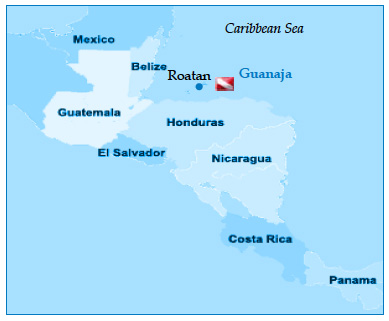 The two dive boats, measuring 42 and
45 feet, were similar to Newton 46s but
roomier, each easily accommodating our
21 divers. My biggest criticism was that
although there was a big camera rinse
bucket, there was no camera table or safe
camera storage. I suggested to the divemasters
that they could add a camera table by
attaching it to the top of the engine cover
in the middle of the deck. They told me
they liked the idea.
The two dive boats, measuring 42 and
45 feet, were similar to Newton 46s but
roomier, each easily accommodating our
21 divers. My biggest criticism was that
although there was a big camera rinse
bucket, there was no camera table or safe
camera storage. I suggested to the divemasters
that they could add a camera table by
attaching it to the top of the engine cover
in the middle of the deck. They told me
they liked the idea.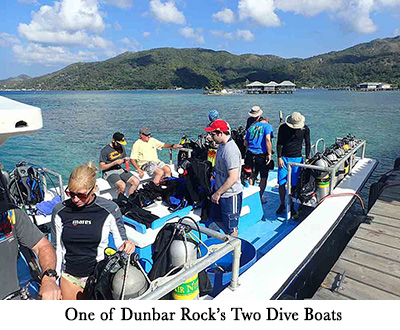 The closest wreck dive was Jado Trader, a 200-
foot tramp freighter sunk 30 years ago, resting on
its side at a sandy-bottomed 100 feet adjacent to
a reef wall. It's encrusted with nearly every species
of Caribbean soft coral and guarded by five
large tarpon hovering nearby. The large free-swimming
green morays under the hulk were a friendlier bunch.
Schools of silver scad and glassy sweepers filled
the easily accessible interior; a large channel crab
inhabited a shelf on the stern at about 70 feet.
During my ascent, I saw a small group of long-snout
seahorses at 40 feet, perched on the pinnacle near
the bow, while shoals of Creole wrasse streamed
across my path.
The closest wreck dive was Jado Trader, a 200-
foot tramp freighter sunk 30 years ago, resting on
its side at a sandy-bottomed 100 feet adjacent to
a reef wall. It's encrusted with nearly every species
of Caribbean soft coral and guarded by five
large tarpon hovering nearby. The large free-swimming
green morays under the hulk were a friendlier bunch.
Schools of silver scad and glassy sweepers filled
the easily accessible interior; a large channel crab
inhabited a shelf on the stern at about 70 feet.
During my ascent, I saw a small group of long-snout
seahorses at 40 feet, perched on the pinnacle near
the bow, while shoals of Creole wrasse streamed
across my path.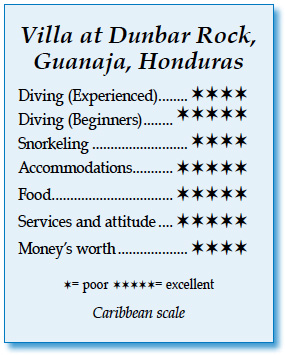 I only saw one or two lionfish on
each dive, probably because Dunbar Rock
has a harvesting program. The divemasters
carried a Hawaiian sling and a ZooKeeper
container on every dive. We were all
encouraged to spot lionfish, and the
larger ones were turned into our dinners.
The smaller ones were fed, spines and all,
to nurse sharks, which made for great pictures
and video.
I only saw one or two lionfish on
each dive, probably because Dunbar Rock
has a harvesting program. The divemasters
carried a Hawaiian sling and a ZooKeeper
container on every dive. We were all
encouraged to spot lionfish, and the
larger ones were turned into our dinners.
The smaller ones were fed, spines and all,
to nurse sharks, which made for great pictures
and video.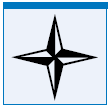 Divers Compass: My seven-night dive package for a double-occupancy
room was $1,995 per person and included Wi-Fi, airport transfers,
laundry service on Tuesday and Thursday, use of the kayaks, tours to
Guanaja, one night dive and unlimited shore diving . . . I tipped 10 percent on my dive package and gave it to Jennie so she could distribute it to staff,
but I personally gave tips to the divemasters . . . Nitrox was $10 per bottle, or
$120 for a week's worth of unlimited bottles; Dunbar also has access to helium and
technical gas blending . . . Extra night dives cost $40, with a minimum of six divers
required . . . Dive groups of up to 26 people can rent out Dunbar Rock, starting at
$49,500 per week; Cabanas on Clark's Cay is a nearby, nice-looking resort with room
for another 20 divers . . . Delta, American and soon Southwest fly to Roatan, with
most flights arriving on weekends; there are USA routes through the Honduran mainland,
but I'd stay away from there at this time . . . Lanhsa charter, Guanaja Air,
Aero Caribe and Bay Islands airlines usually run flights from Roatan to Guanaja on
Saturdays to coordinate with U.S. arrival flights; weight allowance is 50 pounds free
plus a carry-on, and 50 cents per pound after that . . . You need a passport with
six months remaining at time of entry . . . U.S. dollars are accepted, along with
Honduran Lempiras; contact your credit card company prior to arrival to authorize
charges, because Honduras is reportedly a hotbed for credit card fraud . . . There's
a new hyperbaric chamber at the medical clinic near Guanaja's airport, funded partly
by a grant from DAN because of the high rates of decompression illness among local
commercial lobster divers . . . Voltage is 110 North American . . . No bugs or sand
fleas on Dunbar Rock, although sand fleas are famously bad on Guanaja itself . . .
Take your depleted batteries home with you . . . Websites: Villa at Dunbar Rock -
Divers Compass: My seven-night dive package for a double-occupancy
room was $1,995 per person and included Wi-Fi, airport transfers,
laundry service on Tuesday and Thursday, use of the kayaks, tours to
Guanaja, one night dive and unlimited shore diving . . . I tipped 10 percent on my dive package and gave it to Jennie so she could distribute it to staff,
but I personally gave tips to the divemasters . . . Nitrox was $10 per bottle, or
$120 for a week's worth of unlimited bottles; Dunbar also has access to helium and
technical gas blending . . . Extra night dives cost $40, with a minimum of six divers
required . . . Dive groups of up to 26 people can rent out Dunbar Rock, starting at
$49,500 per week; Cabanas on Clark's Cay is a nearby, nice-looking resort with room
for another 20 divers . . . Delta, American and soon Southwest fly to Roatan, with
most flights arriving on weekends; there are USA routes through the Honduran mainland,
but I'd stay away from there at this time . . . Lanhsa charter, Guanaja Air,
Aero Caribe and Bay Islands airlines usually run flights from Roatan to Guanaja on
Saturdays to coordinate with U.S. arrival flights; weight allowance is 50 pounds free
plus a carry-on, and 50 cents per pound after that . . . You need a passport with
six months remaining at time of entry . . . U.S. dollars are accepted, along with
Honduran Lempiras; contact your credit card company prior to arrival to authorize
charges, because Honduras is reportedly a hotbed for credit card fraud . . . There's
a new hyperbaric chamber at the medical clinic near Guanaja's airport, funded partly
by a grant from DAN because of the high rates of decompression illness among local
commercial lobster divers . . . Voltage is 110 North American . . . No bugs or sand
fleas on Dunbar Rock, although sand fleas are famously bad on Guanaja itself . . .
Take your depleted batteries home with you . . . Websites: Villa at Dunbar Rock -
